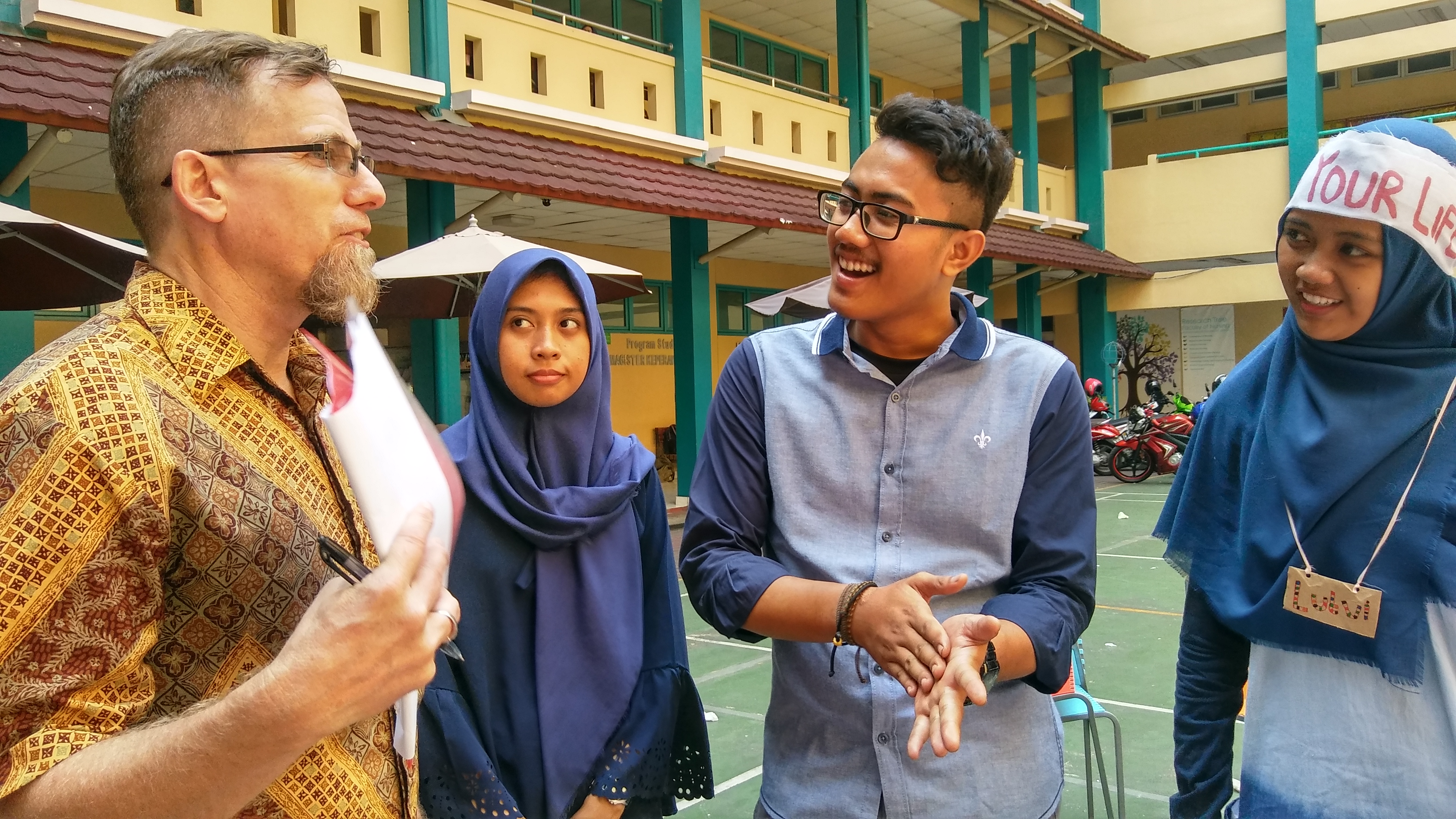One of the most enriching experiences for language learners is to have the opportunity to engage in an authentic dialogue with a native speaker as it allows them to have a first-hand encounter with the verbal and non-verbal features of the language and to come in contact with someone who views the world differently.
This opportunity can also be seen as one of the activities that will increase students’ motivation in learning English. By having a first-hand encounter with native speaker, students will be able to measure their improvement in learning English. They will become more and more motivated when they realize that they are able to understand the native speaker’s pronunciation and able to answer the question by native speaker. Most importantly, they know that when they are speaking English, the native speaker understand what they say. The testimonies interspersed throughout these activities indicate how grateful students are to be understood by the native speaker.
The native visit program from National English Centre has been established for more than 10 years. This program was last held in one of college in East Jakarta. The native speaker was given an hour-session in every class to be the lecturer, while the facilitator as the moderator. These are the activities held during this program.
- Introduction Session
As this was the first time for the students to meet the native speaker, they seemed to be confused and didn’t know what to do. But after a while, they seemed to be engaged by the small conversation between them and the native speaker. They began to wonder who the native speaker is and where he is from. First, the native speaker introduced himself shortly by telling them his name and where he is from. He didn’t tell the students about his family, country, culture and that sort of things, to keep the students curious and have them involved in further free conversation by asking questions to the native speaker. Before asking the questions to the native speaker, the students were supposed to tell their name, age, and hobbies.
- Free Conversation Session.
This session was started after the native speaker and the students introduced themselves. The students were supposed to ask the questions to the native speaker. The native speaker then gave them the answer and made a little correction to their questions when he found them make mistake in their questions. The questions that the students asked were mainly about the different culture between Indonesia and his origin country. The students also asked about his family, his Indonesian favorite food, and some places that he had visited in Indonesia. The students seemed to be engaged more in this session than in introduction session and the native speaker began to feel curious when there was a student asked him if he liked Indonesian food called “Jengkol” since he never either eat or see it before.
- Feedback Session from the native speaker
This was the last session of the program. After having free conversation with the students, the native speaker then gave some feedback and motivated them in order to be confident and fluent when speaking English. He concluded that most of them had good English. They just needed to be more confident and not being afraid of making mistakes when speaking English. Furthermore, he added that the students still have more time to learn and practice their English since they were still young.
In conclusion, by having a direct conversation with the native speaker, the students will be more engaged with their English learning and feel more motivated to practice it in their daily communication.
Author: Henu Pradoto



